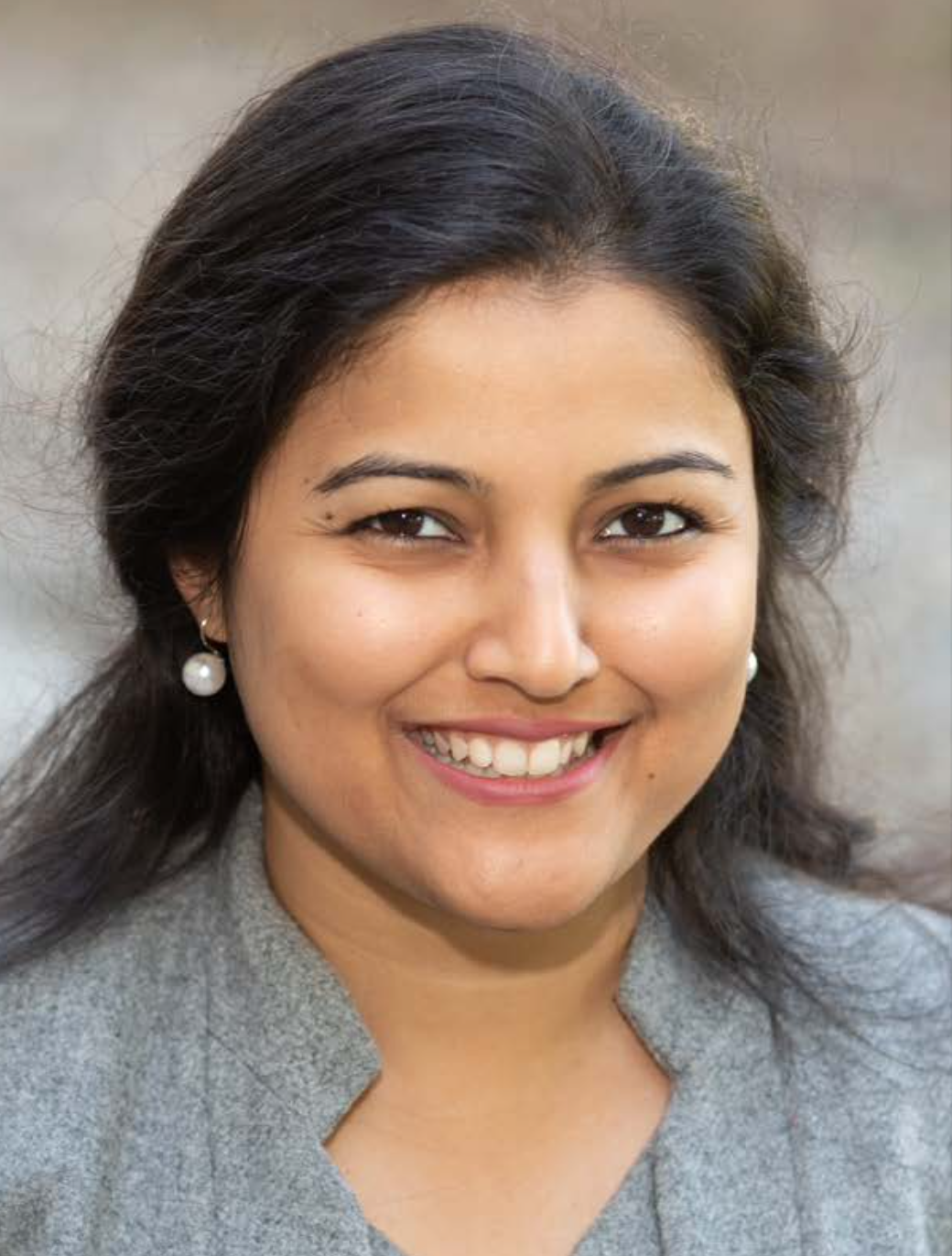As clouds of smoke billowed from the power plant smokestack, Pallavi Bharadwaj thought, This isn't sustainable.
Each day, the electrical engineering student passed a coal-fired power plant on her way to university from her family’s home in Delhi. Between car exhaust and fossil fuels, the city was densely blanketed in some of the world’s worst smog. Pallavi resolved to find a renewable energy solution.
Her quest led her to the leafy Bangalore campus of the Indian Institute of Science, where she spent her PhD developing hardware and algorithms for solar photovoltaic systems to continually and more efficiently convert sunlight to electricity. The technology Pallavi developed cost a fraction of commercial systems’ price and received a patent in October 2021.
But the compact, high-energy Pallavi, whose first name means ‘new leaf’ or ‘green shoots’ in Hindi, hasn’t rested on her laurels.
In fall 2019, she arrived in Boston as a PhD exchange student, one of a handful selected by the Indian government for a six-month program, and took a class with LIDS Senior Research Scientist Marija Ilic to learn more about the theory and modeling of complex power systems.
The class introduced her to interdisciplinary research at LIDS and since January 2020, she has been a postdoctoral researcher at the lab, working with Marija on the next generation of electric energy systems.
“As electrical engineers, most of us are schooled in one specific way of thinking,” Pallavi says. “At LIDS, there are such brilliant minds working on the data side of things; you should take advantage of all these different perspectives.”
In her time at the lab, together with a team of fellow postdocs and students, Pallavi developed a mathematical model of a large airport’s power system to help improve its energy efficiency.
Large industrial systems, such as a large airport’s, often involve many different sources and types of energy: they may draw electricity from the grid, but also generate their own electricity from solar panels, use gas for heating water, and so forth — making it a complex multi energy system.
Pallavi and her colleagues first developed a common language of modeling variables to make these different energy systems ‘speak to each other’ so they can be integrated. This work is a part of fundamental energy-based modelling research Marija’s group introduced recently. Then, they demonstrated that their methods worked in practice in a large industrial HVAC (heating ventilation and air conditioning) system to make it energy and cost efficient.
In the last few months, Pallavi has enjoyed interacting with several national labs and academic institutes across US to launch another challenging project to boost the cybersecurity of microgrids. With recent events across the globe where cyber-attacks threatened the nordmal operation of electrical and transportation systems, cyber security is emerging as the need of the hour with exponential growth in energy electrification.
When a cyberattack occurs, hackers may mask the attack by altering sensor readouts to say all is well. So Pallavi and Dan Wu (a fellow postdoc) created an observer for microgrid — a set of algorithms that can give an estimate of the internal state of a system based on its inputs and outputs — that learns to recognize the grid’s normal state, and course-corrects when it spots something amiss. By creating their observer, which predicts correct system behavior even under compromised sensor measurements, Pallavi and her colleagues have helped move toward more secure microgrids, and more stable energy supplies for those using them.
In between her research projects, Pallavi has found time to organize wellness activities for MIT’s postdoctoral researcher community during the pandemic, from sunset yoga to a guided meditation session. “Postdocs are often balancing work and family, and in a transition phase of their lives,” she says. “It can be a very stressful, isolating experience, so connecting with others can really heal you.”
Marija describes Pallavi as a motivated, organized self-starter: “I’m positive she will work well with potential partners and sponsors and become a successful faculty member.”
That’s exactly where Pallavi is headed next. She is currently in the decision-making phase with several faculty and industrial position offers she has received. She hopes to expand on her work with power engineering, specifically focusing on the transition to renewable energy.
Another question Pallavi hopes to explore is how to optimize energy storage solutions. Interestingly, the growing popularity of electric vehicles offers a possible part of the solution, for what is a plug-in electric vehicle but a rechargeable battery on wheels? The challenge of developing battery management systems for not only increased lifetime of batteries but also recharge them optimally with renewable energy sources will bring forth the real green energy transition.
But there are a few snags. Both electric vehicles and solar cells use direct current, and power grids use alternating current, which is easily converted to higher or lower voltages for ease of transmission or safety. And while solar panels generate electricity during the day, most electric vehicles are parked and plugged in at night.
A smarter grid would work out, through algorithms and pricing incentives, how and when to connect and integrate all these different components to generate and store electricity from renewables most efficiently.
As Pallavi sees it, she could readily work on this for much of her future career. “Big policies are being made for climate change mitigation. But who will make the energy transition happen? Our job in the next 30 years is to make the net-zero transition technically possible.”



